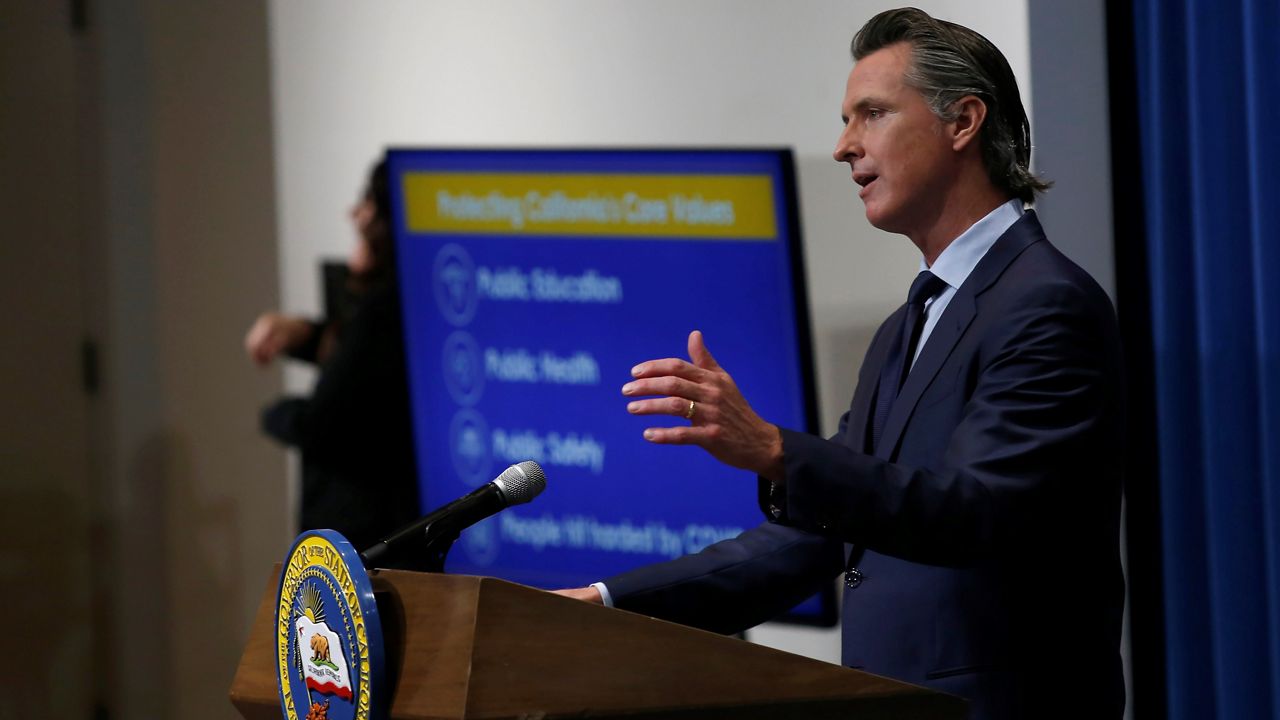SACRAMENTO, Calif. (AP) — California Gov. Gavin Newsom’s budget plan released Friday would turn a $15 billion windfall into economic relief as the state faces a rapid surge in coronavirus cases and deaths.
His $227 billion plan also includes $1 billion for “wildfire and forest resiliency.”
The state Legislative Analyst had predicted the windfall would be around $26 billion.
Since California’s progressive tax structure relies mostly on wealthy earners, the pandemic has led to a strange contrast in the nation’s most populous state: Many people who earn more than $60,000 per year have been able to keep their jobs because they can work from home.
But the employment rate for people who earn less than $27,000 per year — including restaurant and retail workers — has dropped nearly 27% since January, according to data from Opportunity Insights at Harvard University.
The state has lost more than 1 million jobs compared with last year — the most in the country — yet it has collected $74.4 billion in taxes, or $13.7 billion more than it had anticipated.
The result is what the nonpartisan Legislative Analyst’s Office calls a one-time “budget windfall.”
Newsom, together with state lawmakers, must figure out the best way to spend that money. The governor has already previewed some of his proposals. After Congress approved a $600 payment for adults, Newsom said he wants to give an additional $600 to Californians who earn $30,000 or less. If approved, that proposal would cost $2.4 billion.
Newsom also wants to spend more than $4 billion to, he says, create jobs and help small businesses. And he wants to give schools $2 billion to help pay for testing, ventilation and personal protective equipment as he seeks a return to in-person instruction.
Newsom’s proposal is just the first step in the budget process. Lawmakers must still vet his ideas and vote on them, a process that usually isn’t completed until mid-June so the budget can take effect July 1. This year, Newsom is asking lawmakers to act earlier on some of his proposals.
Legislative leaders have pledged to act quickly, but it’s unclear when that might happen. Lawmakers are scheduled to reconvene on Monday.
Public education will be a big issue after the state last year deferred more than $12 billion in spending for public schools. The deferral meant school districts had permission to spend the money, but the state would pay them back in future years. Many had to borrow or dip into their reserves to cover it.
“The first objective is to get out from underneath this record level of borrowing from schools,” said Kevin Gordon, a lobbyist who represents public school districts.
Health care spending, always an important part of the state’s budget, will take on even more importance this year as hospitals are overwhelmed with virus patients and the state is struggling to quickly distribute limited quantities of a coronavirus vaccine. Newsom has already proposed $300 million for vaccines, including a “public education” campaign.
Last year, Newsom initially proposed health care cuts to cover the projected shortfall. Most of those cuts did not make it into the final budget. But Carmela Coyle, president and CEO of the California Hospital Association, said she will be watching closely for any proposed cuts this year.
“This should be a budget that leaves the health care delivery system, hospitals especially, untouched,” she said.
In his first year in office, California Gov. Gavin Newsom had a $21.5 billion surplus to spend. In his second year, he had to make up a $54.3 billion shortfall.



